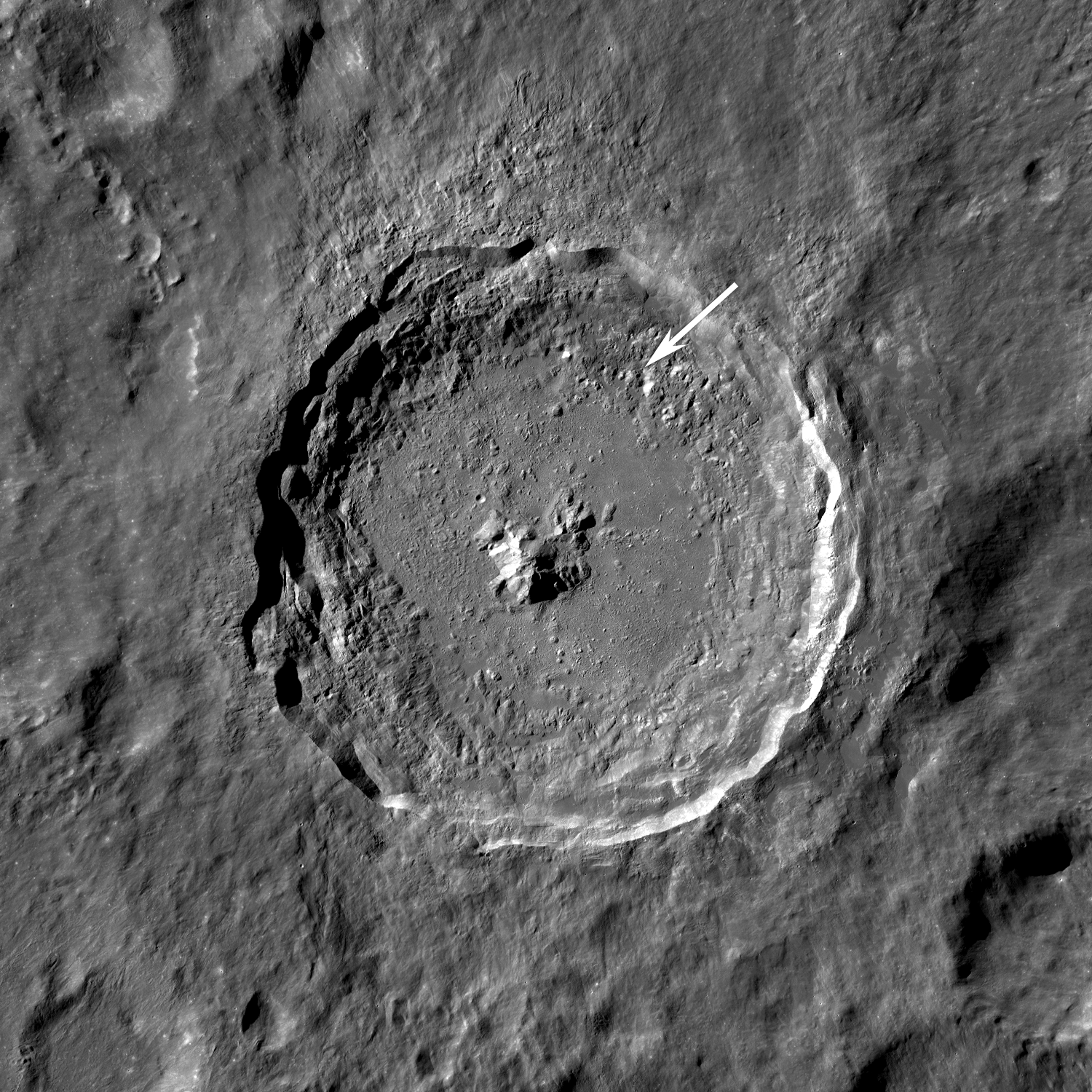
Tycho crater is a Copernican age crater (85 km diameter) located at 43.3°S, 11.2°W. It is named for the 16th century Danish astronomer Tycho Brahe and is one of the most visible features on the near side of the Moon. Its ray system is so obvious and widespread that Apollo 17 astronauts sampled its ejecta, over 2000 km away from the crater! Scientists dated the Tycho samples at about 110 Ma. We also have surface views of Tycho's ejecta blanket taken by the Surveyor 7 soft lander.
Notice the smooth areas on the top of the ejecta block in this NAC frame. Most likely the smooth area is a thin sheet of impact melt. The large block was probably flung up during the impact event, fell back down into the crater, and subsequently covered by impact melt. This series of events must have occurred quickly after the impact, as the melt would solidify soon after forming.
Explore the rest of the impact melt within Tycho in the full LROC NAC!
Related Posts: Impact melt at Necho crater
Published by Drew Enns on 8 December 2010
